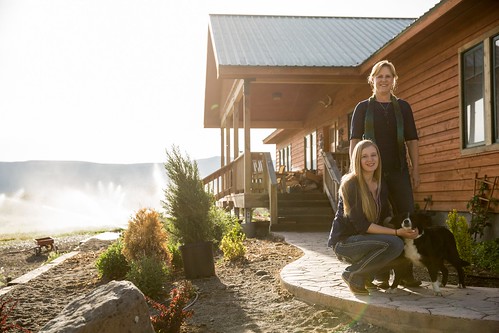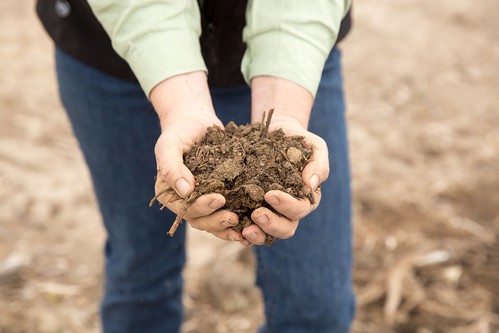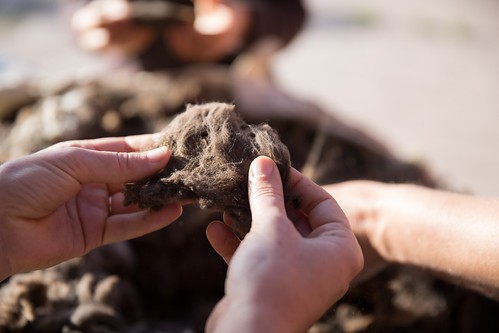
What if, before you purchased a hat or sweater, you knew the wool used to make it came from sheep raised on a ranch managed to improve soil health and increase soil carbon?
For nearly a decade, ranch owner Lani Estill has worked with the USDA Natural Resources Conservation Service (NRCS) to improve soil health. By adding carbon-conscious conservation practices to her ranch, the operation now stores more carbon in the soil than it emits through its operations.
As a result, her operation, Bare Ranch, is marketing “climate beneficial” wool to a national clothing manufacturer. Estill and her family raise sheep and cattle on her 40,000-acre ranch, which sits on the border of northern California and northwest Nevada.
With help from her local NRCS offices and supported by Environmental Quality Incentives Program (EQIP) contracts, Estill has also improved wildlife habitat on her ranch. She improved sage grouse habitat by removing thousands of acres of invasive juniper and installed hedgerows for pollinators. She and her co-owners also installed fencing and livestock watering facilities and are following a prescribed grazing management plan.
Bryon Hadwick, NRCS District Conservationist in Alturas, California, works closely with Estill and Bare Ranch to implement conservation practices that are good for the land, animals, atmosphere, and their business. NRCS is a member of the Bare Ranch conservation team, which includes Point Blue partner biologists, the Carbon Cycle Institute and Fibershed (an organization focused on local fiber-sourcing). This past spring, Bare Ranch worked with these partners to develop and adopt a Carbon Farm Plan.
“The Bare Ranch conservation plan represents a partnership and a commitment to sustainability,” said Hadwick. “Through this partnership, the Estill Family is demonstrating that conservation, environmental benefits and profit can all be generated simultaneously.”

Guided by Estill’s goals and developed using the NRCS’ conservation planning process, the science-based Carbon Farm Plan incorporates data from USDA measurement tools like COMET-Planner and COMET-Farm. These whole farm and ranch tools serve as a greenhouse gas and carbon sequestration accounting system for the operation.
The Bare Ranch Carbon Farm Plan prioritizes practices that sequester carbon, add perennial biomass, and grow healthy forage. It assesses the ranch’s ecology and soils, and then recommends management practices to improve soil health and sequester more carbon in the soil and perennial biomass. While conservation practices that build the land’s carbon reserves can help mitigate climate change, they also help increase resilience to changing climate conditions, enhance overall productivity, and improve the water-holding capacity of the ranch’s soil.
As the public becomes increasingly aware of the environmental impacts of their food and other consumer products, many ag producers and manufacturers are turning natural resource conservation practices into a competitive business advantage. The Bare Ranch Carbon Farm Plan has helped the owners produce a “climate beneficial” wool beanie in partnership with The North Face clothing retailer. The hat, and its conservation story, tap into a growing consumer demand for products that benefit the environment. By measuring the impact of their conservation practices, Bare Ranch has provided the transparency and quantified conservation value of their wool production that companies like The North Face—and consumers—are seeking.

Thanks to NRCS quantification tools and the science-based Carbon Farm Plan, Bare Ranch can determine how much carbon it sequesters annually. And when consumers purchase wool products made from Bare Ranch fibers, they are directly supporting the conservation mission shared by Estill and NRCS.
You can learn more about the Bare Ranch story by listening to this Capital Public Radio story.
